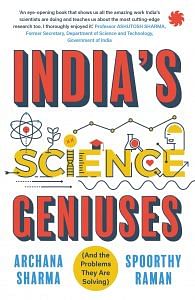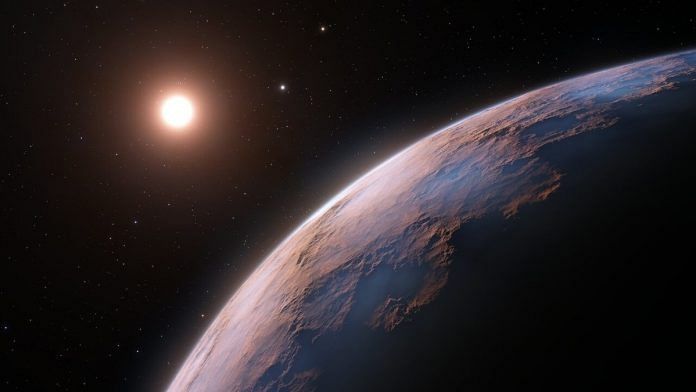An intrepid traveller having a penchant for roads less taken. An occasional sketcher who enjoys designing something new. A fearless physicist who believes she can accomplish anything even in the face of failures. A material scientist who thinks trying and erring is part of her sport. An insatiable learner who cherishes the lessons learnt on her tireless journey. She is Sejal Shah, a scientist at the Institute for Plasma Research (IPR), Gandhinagar, and a member of the Indian team partnering internationally to achieve something ambitious – creating a piece of the Sun on the Earth. Shah uses her physics and material science expertise to help recreate the processes occurring at the core of the stars.
The world is hungrier for energy than ever before. From staying warm and cosy in our room, lighting our houses to commuting to work, we need enormous energy for everyday tasks. Since the Industrial Revolution in the nineteenth century, fossil fuels have met most of our energy needs. However, they have also resulted in massive emissions of greenhouse gases like carbon dioxide and methane. As a result, the world is warming and is facing an impending climate catastrophe. We are now on the lookout for a greener energy source. As it turns out, the answer to our quest may lie in the Sun.
Our Sun and a zillion other stars in the Universe are gigantic energy powerhouses, emitting energy as light and heat. Stars are formed when a big chunk of hydrogen gas, the most abundant element in the Universe, lumps together at high temperatures. At their core, stars sizzle at around 15,000,000°C. Atoms of hydrogen begin to lose their electrons and turn into an ionized state of matter called plasma. The remnant nuclei then collide at incredible speeds and fuse to form helium gas. This process, called nuclear fusion, releases vast amounts of energy that powers the Sun and other stars. One doesn’t have to go to the stars to see what ionized gas can do – the colourful auroras in the sky are plasma in action. They result from collisions between gaseous particles in the Earth’s atmosphere and charged particles released from the Sun.
Also read: English in taste, Indian at heart—JC Bose was nationalist first, scientist later
Recreating the stellar process of nuclear fusion on Earth is no easy feat. We need to find ways to reach the necessary scorching temperatures for atoms to collide. We also want techniques to create plasma on Earth and hold it in the lab for the nuclei to collide. Scientists have built special devices called tokamaks in the last few decades that use a powerful magnetic field to hold plasma and facilitate nuclear fusion reactions. In India, Aditya and SST-1, two indigenously built tokamaks, are installed at IPR. They have provided a valuable understanding of plasma properties for small- and medium-sized fusion devices.
But if we can find ways to produce more energy than what tokamaks consume, there are several advantages. Energy from nuclear fusion is free from harmful gases and long-lived radioactive nuclides and is more sustainable than fossil fuels. Earth has vast amounts of hydrogen needed for such reactions. Unlike fission, fusion reactions do not generate toxic radiation wastes. Scientists predict that the costs of fusion energy will drop substantially in the future, making it viable. Motivated by these factors, an international consortium of plasma researchers has embarked on a mission to build the world’s largest nuclear fusion experiment called International Thermonuclear Experimental Reactor (ITER).
Shah is one of the many scientists who are part of ITER. In her role, she uses her expertise and learnings to design and build a vital component that embeds unique attributes of ultra-high vacuum and electrical interface with the tokamak at ITER. She also studies how fast-moving neutrons emanating from the fusion reactor affect different insulator materials used in the reactor’s components. The data from Shah’s radiation studies can guide other scientists and engineers in building machines like spacecraft that are regularly exposed to similar radiations.
Also read: LTTE’s ‘plan B’ to eliminate Rajiv Gandhi in New Delhi using human bomb Athirai
Fuelled by dreams and passion
At ITER-India, Shah is on the team that’s building the diagnostic neutral beam that uses hydrogen beams to diagnose the helium ash produced after the fusion reactions. She has designed a component that provides electrical and vacuum isolation between a high voltage source, which generates hydrogen beams, and the other supporting system. ‘It wasn’t a piece of work related to physics exactly, but I took up the challenge,’ Shah says. With it, she began exploring the field of electrical and mechanical engineering. She partnered with fellow engineers, designing the parts needed for the component from scratch.
Like most scientists, Shah also faced some setbacks in her work. Her team had to learn how to manufacture world-class parts for her component without sacrificing quality. They tried and failed many times before they could taste success. There were instances when her team had assembled the whole component only to take it apart when some things went astray. But, the efforts eventually paid off. ‘It was a rewarding moment to see the entire component, which was designed and developed for over a decade, work successfully,’ she shares.
Shah would not rest without going the extra mile to apply her expertise in material science in her work at ITER. She began studying the effects of high energy neutron beams on insulators used around the tokamak. After conducting laboratory experiments, she started curating research on how different insulators, like alumina, porcelain and polymers, behaved in the presence of radiation. While scientists knew high energy radiation could be detrimental to these insulators over time, they are still exploring the details. Shah’s work captures these details. ‘We wanted to make a database of radiation effects on these insulators so that a scientist working with them in the future can take into account how they behave in the presence of radiation,’ she explains.
As a child, Shah aspired to achieve big things in life. But growing up in a small town in Gujarat that did not have a university for higher studies posed a hurdle. With many sacrifices along the way and a very supportive family, she excelled in her studies in her college and university, becoming a physicist. ‘My dedication pushed me in this journey and helped me achieve my goals,’ she recollects. Her fearless attitude and passion, which she hopes others find inspiring, shape her responses to challenges. Much like how she seeks the paths less taken in her travel adventures, she finds niche fields in her scientific journey that can help India reach new heights.

This excerpt from ‘India’s Science Geniuses (And the Problems They Are Solving)’ by Archana Sharma and Spoorthy Raman has been published with permission from Juggernaut Books.



